In-Depth Look at Pokémon Let's Go, Pikachu Gameplay
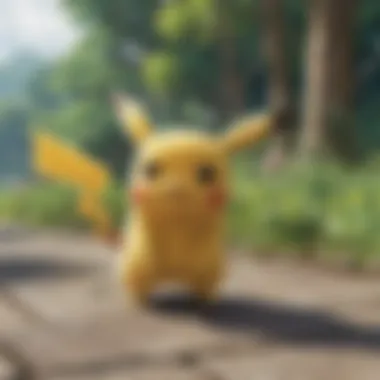
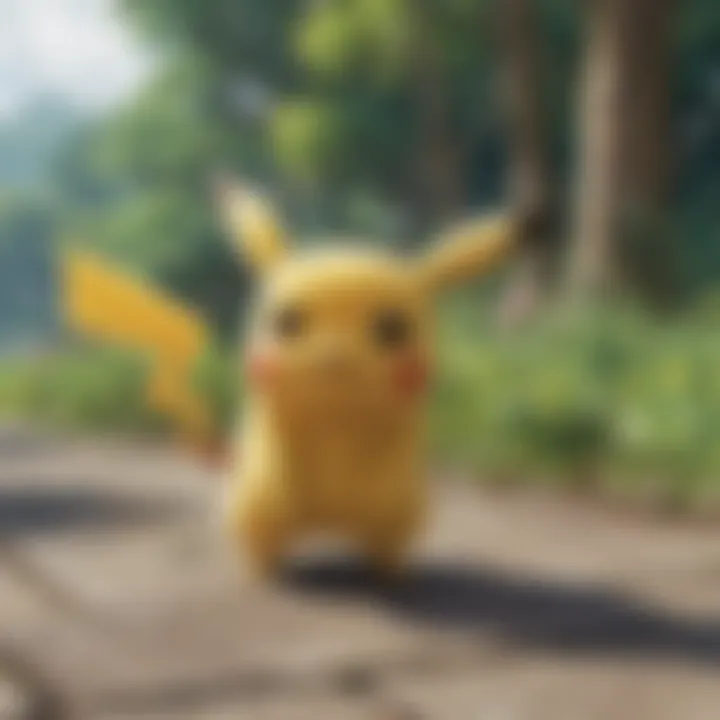
Pokemon Game Overview
Over the decades, Pokémon has enchanted millions with its combination of adventure, strategy, and nostalgia. Since the first release in 1996, the franchise has undergone significant shifts, both in concept and execution. From the rudimentary mechanics of the original Game Boy titles to the vibrant, sprawling worlds we see today, the evolution of Pokémon games is a story of innovation with every passing generation.
History of Pokemon games
The birth of Pokémon as we know it can be traced to Satoshi Tajiri's concept of capturing, training, and battling creatures. The original titles, Pokémon Red and Pokémon Green, introduced players to the Kanto region, igniting a worldwide phenomenon. It's astonishing how the simple act of catching imaginary creatures led to a cultural revolution, spawning a trading card game, an animated series, merchandise, and countless sequels and spin-offs.
Evolution of gameplay mechanics
Pokémon Let's Go, Pikachu! marks a fascinating twist in the franchise's trajectory. Combining elements from Pokémon GO with traditional gameplay, it draws players old and new into its captivating grasp. The game reimagines mechanics that long-time fans remember, such as the streamlined catching process. Instead of intricate battles, players are encouraged to explore and catch Pokémon in a way reminiscent of mobile experiences.
Prelude to different game versions
Since its inception, Pokémon has delivered various game versions. There’s the standard RPG experience, but also offshoots like Pokémon Snap and the Pokémon Mystery Dungeon series. Each iteration adds depth to the lore and mechanics. Let's Go, Pikachu! and its counterpart Let's Go, Eevee! stand distinct with their promise of a nostalgic journey, redesigned graphics, and an emphasis on camaraderie with Pokémon as true companions.
Tips and Strategies
As you embark on this Pokémon adventure, whether you're a newcomer or returning from a decade-long hiatus, having a roadmap of strategies can propel your gameplay.
Beginner's guide to Pokemon games
For fresh trainers stepping into the Pokémon universe:
- Start small: Focus on catching Pokémon that are easy to find. The early routes are teeming with variety but don't overwhelm yourself with the rarest finds.
- Familiarize with controls: Knowing how to navigate menus can save time in battles and encounters. Don’t hesitate to experiment as you catch 'em all.
- Utilize the Joy-Con effectively: Capture mechanics are made for fun interaction. Use the Joy-Con to toss Poké Balls accurately and time your throws with an eye for the moving targets.
Advanced gameplay tactics
Once you’ve mastered the basics, you might want to delve deeper into refining your gameplay:
- Maximize catching chances: Use bait and specialized Poké Balls in tandem for a better capture rate. Don’t be afraid to test out different combinations.
- Pokémon trends: Pay attention to Pokémon Types. Knowing elemental advantages can swing battles in your favor.
- Training and leveling up: Focus on leveling your Pokémon uniformly to create a balanced team, ready for unexpected challenges.
Team building strategies
Crafting the ideal team can be critical to your success. Consider the following:
- Diversity is key: Try to balance your roster with a variety of Types to counteract different gym leaders and trainers.
- Synergy matters: Some Pokémon have moves that complement others within the same team. Think strategically about move sets.
- Personal preference: Ultimately, play with Pokémon you love. Their performance can inspire confidence and result in better gameplay.
Character Spotlights
It's impossible to talk about Let's Go, Pikachu! without acknowledging the beloved characters that have shaped our journey:
Featured Pokemon profiles
Take the iconic Pikachu, for example. With its cheerful demeanor and electric powers, Pikachu stands as the mascot of the franchise. But don’t overlook Eevee and its many evolutions, offering versatility and charm. Each Pokémon has its strengths that can be explored to enhance gameplay.
Analysis of popular characters
Exploring characters in depth reveals how they influence how players engage with challenges. Characters like Gym Leaders each represent different hurdles, demanding strategy, patience, or even raw power.
Impact of characters on gameplay
Part of the magic of Pokémon lies in how relationships with characters like Professor Oak or your rival shape motivations and objectives throughout the journey. These interactions often inspire players to push onward with renewed enthusiasm and engagement.
Latest News and Updates
Keeping abreast of game updates and developments can enhance your experience.
Recent game releases
As of late, the Pokémon Company has consistently rolled out additional content and events that breathe continuous life into the gaming community. Events often bring new Pokémon into the fray, allowing players to expand their collections and train new favorites.
Patch updates and events
Regular patches tweak gameplay mechanics to balance characters and enhance performance. Make sure to check their official channels for sneak peeks into future updates.
Rumors and speculations
Speculation always swirls within the Pokémon community. Whispers of new Pokémon, potential sequels, or mobile integrations often circulate in platforms like Reddit and social media, keeping fans engaged and eager for the next announcement.
Prelude to Pokémon Let's Go, Pikachu
In the ever-evolving universe of Pokémon gaming, Pokémon Let's Go, Pikachu stands as a significant milestone. This title is not just an homage to the classic adventures that many grew up with; it acts as a bridge connecting seasoned trainers and new players alike with both familiarity and innovation. The game’s design meticulously integrates elements of the original Pokémon series while introducing contemporary mechanics, particularly influenced by the mobile sensation Pokémon Go.
Every player approaches Let's Go, Pikachu equipped with different expectations and experiences. For newcomers, it simplifies the complexities of previous Pok�émon titles, making it accessible. You can quickly dive into the world of catching and training Pokémon, experiencing the journey without the steep learning curve that often accompanies traditional RPGs.
For the veterans, however, this game presents a nostalgic journey through Kanto, encapsulating memories woven into pink-hued graphics and cheerful sounds. The visual and auditory aesthetics pay tribute to the past, transporting players back to when Pikachu was merely a pixelated companion on their journey.
Moreover, Let's Go, Pikachu leverages motion controls and simplified catch mechanics, making it an engaging experience where the joy of capture feels fresh, yet familiar. The spin on the tried-and-true formula introduces new gameplay dynamics, encouraging strategies that differ from the game's predecessors.
As we explore the nuances of Pokémon Let's Go, Pikachu, let’s not overlook the community that thrives around it. Social interactions through trading and battling foster connections, echoing the very essence of what Pokémon has always been about—friendship and collaboration, blending challenges with fun.
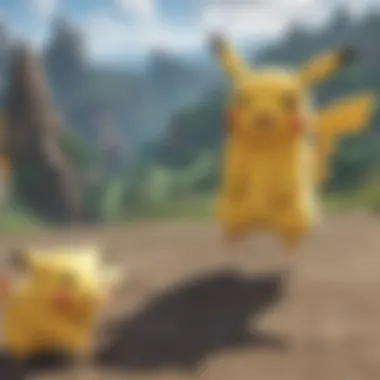
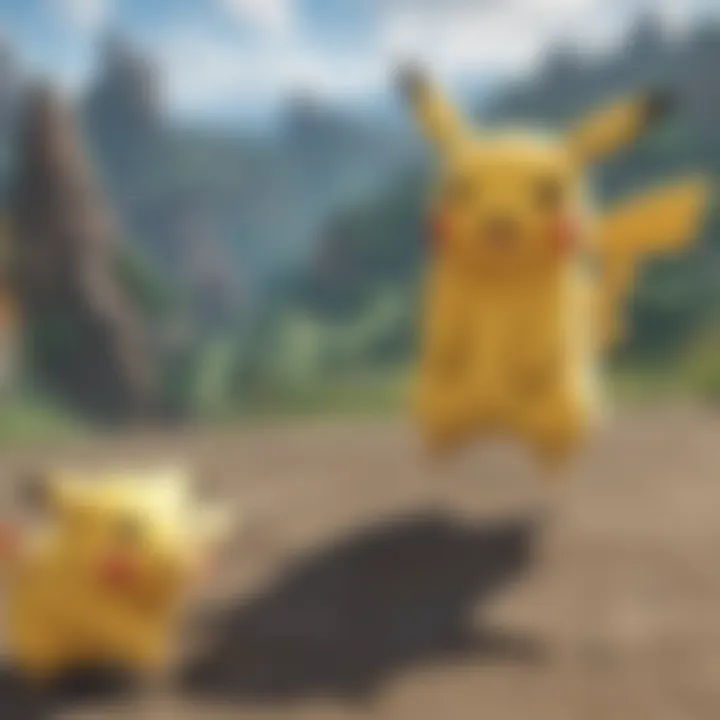
In essence, the importance of understanding Pokémon Let's Go, Pikachu is found in its unique position within the franchise. It recognizes the rich history of Pokémon while pushing forward into a new realm of gameplay. Each aspect serves a purpose—offering not just gameplay mechanics but enriching the overall cultural tapestry that Pokémon has created over the decades.
Historical Context of Pokémon Games
Understanding the historical context of Pokémon games is essential to appreciate how far the franchise has come and the innovations introduced in titles like Pokémon Let's Go, Pikachu!. This section will shed light on the evolution of Pokémon as a whole and how it shaped the gameplay mechanics and strategies that players enjoy today.
Evolution of Pokémon Titles
The Pokémon franchise emerged in the mid-1990s. Initially, it was a pair of video games for the Game Boy, developed by Game Freak and published by Nintendo: Pokémon Red and Green in Japan. Over the years, the series blossomed, introducing new mechanics, storylines, and adorable creatures.
From the very first generation, players have seen changes that aren’t merely cosmetic. Each new title has explored different aspects of gameplay, introduced features, and refined previously established ones. For instance, when Pokémon Gold and Silver launched, it brought a day-night cycle and the ability to breed Pokémon—ideas that greatly enriched the experience while retaining the core catch-and-battle strategy.
Fast forward to the six generation, with titles like Pokémon X and Y, which introduced 3D graphics and the fairy-type Pokemon. It was a landmark moment that reinvigorated interest in the series and showcased how modernization could harmonize with classic gameplay. Each evolution reflects a testing of boundaries, yet consistently draws back to its roots—collecting, training, and battling Pokémon.
The real game-changer, however, was the advent of Pokémon Go in 2016. The popularity of augmented reality shifted not just how people interacted with games but influenced future titles significantly.
Impact of Pokémon Go on Game Design
Pokémon Go transformed expectations around mobile gaming. Suddenly, players weren’t just nestled in front of their consoles; they were exploring the outdoors, hunting for Pokémon like a treasure hunt. This aspect of real-world integration laid the groundwork for Pokémon Let's Go, Pikachu!, allowing for an experience that fused nostalgic gameplay from the classic titles with fresh mechanics inspired by the mobile phenomenon.
This new approach reflected broader trends in gaming.
- Impact on Gameplay Dynamics: Traditional mechanics, such as battles and exploration, were infused with mechanics that allowed for casual interactions, capturing the whimsical essence of Pokémon.
- Audience Engagement: The success of Pokémon Go highlighted the importance of community and interaction among players, influencing the multiplayer aspects seen in Let's Go, Pikachu! and emphasizing co-op features.
- New Avenues for Innovation: Game developers realized they could embrace technology beyond consoles, engaging fans in novel ways while staying true to the franchise’s heritage.
In sum, the historical context shows a franchise adaptable to change, yet steadfast in its core concepts. The influence of predecessors and innovations alike lends depth to the busy world of Pokémon and influences both newcomers and veterans in their journey through Kanto.
"The evolution of Pokémon is not just in its graphics or mechanics, but in its ability to keep the core of adventure and friendship intact while embracing change."
By diving deep into these historical elements, fans can gain a richer appreciation for Pokémon Let's Go, Pikachu!—a harmonious blend of the old and the new.
Distinct Features of Let's Go, Pikachu
When diving into Pokémon Let's Go, Pikachu, understanding its distinct features is essential as they shape the gameplay experience. This section delineates the unique elements that set this game apart from its predecessors and contemporaries. Here, we’ll examine three critical aspects: the integration of motion controls, the novel catch mechanics, and the game's visual and auditory aesthetics. Each component contributes substantially to creating an immersive and interactive environment for players, engaging them in ways that prior titles did not.
Integration of Motion Controls
One of the most talked-about features in Let's Go, Pikachu is its motion control system. This mechanic brings the familiarity of Pokémon Go into a more traditional gaming format, allowing players to toss Poké Balls using a flick of the wrist-like motion. It creates a dynamic feel while capturing Pokémon, as players can either use the Joy-Con controllers or the Poké Ball Plus device, which adds another layer of excitement.
This integration of motion controls isn’t just a gimmick; it influences how strategies are formed and how an individual connects with the game. For instance, you’ll find that those who master the physical motions can find optimum success in capturing rare Pokémon. The tactile interaction paired with the pleasure of your Pikachu companion reacting to successful catches works to enhance the emotional bonds players foster with their characters.
Catch Mechanics and Gameplay Dynamics
The catch mechanics in Let's Go, Pikachu are a game-changer. Instead of the traditional battle-first approach, players encounter Pokémon in the wild like in Pokémon Go, where each encounter transitions into a catch challenge. This direct interaction alters the gameplay flow, leading to a more relaxed experience that prioritizes exploration over constant battles.
Fishing for specific Pokémon types or hunting for shiny variants encourages careful planning and patience, steering players to think critically about their approach. Moreover, the ease of switching between using berries, enhancing catch chances, and utilizing different Poké Balls unmatched in prior games creates depth in gameplay.
Key Points about Catch Mechanics:
- Opportunities to catch Pokémon increase through spatial awareness.
- Berries can manipulate Pokémon behavior, enhancing chances of capture.
- Engaging visual feedback emphasizes successful captures, boosting player satisfaction.
Visual and Auditory Aesthetics
Let's not underestimate the power of visuals and audio in Pokémon games. In Let's Go, Pikachu, a refined aesthetic combines vibrant colors with a nostalgic design that harkens back to the original Kanto region, while offering modern flair. The lush environments paired with smooth animations bring the world to life in ways that resonate with both new and long-time fans.
The soundtrack is equally captivating; it evokes a sense of adventure and nostalgia, perfectly complementing the game's pacing. Characters and Pokémon alike are voiced with sound effects that enhance the overall experience, making battles and catches feel lively. Having Pikachu cheer you on or express reactions during encounters deepens immersion, making each adventure a truly unique experience.
"The power of visuals and sound really amplifies the connection between players and the Pokémon world, reminding us of why we fell in love with this franchise in the first place."
In summary, the distinct features of Let’s Go, Pikachu work harmoniously to redefine gameplay while maintaining deep ties to the franchise's roots. They advance the game’s appeal by offering new dynamics, a refreshing sensory experience, and ensuring that every moment spent in the Kanto region feels fresh and engaging.
Exploration of Kanto Region
The Kanto region serves not just as a backdrop but as a character unto itself in Pokémon Let's Go, Pikachu. The importance of exploring Kanto lies in understanding the rich heritage tied to the franchise. This region, the original setting for many Pokémon games, offers players a sense of familiarity, blending nostalgia with innovation. Here, players can uncover hidden paths, interact with various Pokémon, and experience significant landmarks that have become synonymous with the series. The journey through Kanto is not merely a means to catching Pokémon; it reflects a personal connection with the adventures experienced in earlier titles.
Landmarks and Points of Interest
When players traverse the Kanto region, they quickly encounter notable landmarks that each hold a slice of history. Famous locations like Pallet Town, where the journey begins, evoke memories of past adventures. The Viridian Forest, known for its dense foliage and abundant bug-type Pokémon, is another essential area where players can immerse themselves in the wild.
- Cerulean City stands out with its popular pool, home to Misty, the water-type gym leader.
- Lavender Town, shrouded in mystery and ghostly tales, still sends shivers down players' spines, showcasing the darker themes of Pokémon lore.
- Indigo Plateau represents the ultimate challenge where trainers go to test their skills in the Pokémon League.
These landmarks are not mere visuals; they are infused with the essence of Pokémon culture. Each brings with it specific memories and strategic advantages, emphasizing the importance of exploration in crafting unique narratives for every player.
Navigational Mechanics
Navigating through Kanto requires both skill and strategic foresight. Pokémon Let's Go, Pikachu employs intuitive mechanics that cater to both veterans and newcomers. The use of a map helps players to chart their course, while visible Pokémon wandering the environment invites engagement and exploration. The integration of traditional controls alongside motion-based ones ensures that navigation isn’t just functional; it enhances interaction with the world.
In addition, players can enjoy the following elements that elevate the navigational experience:
- Fast Travel: Unlocking certain locations allows swift movement, cutting down on tedious backtracking.
- Hidden Items: Players who pay attention can find hidden items that boost their journey, adding an element of discovery.
- Environmental Cues: Structures like trees, rocks, and ledges have roles beyond aesthetics; interacting with them can yield various results.
The exploration of Kanto in Pokémon Let's Go, Pikachu is a journey filled with possibilities — each corner turned opens up new experiences, solidifying its role as a beloved destination in the Pokémon universe.
The effective design of these navigation systems not only enriches gameplay but also encourages exploration, allowing players to craft their own stories amidst the familiar landscapes. Kanto becomes more than just a setting; it is a world waiting to be comprehended and cherished.
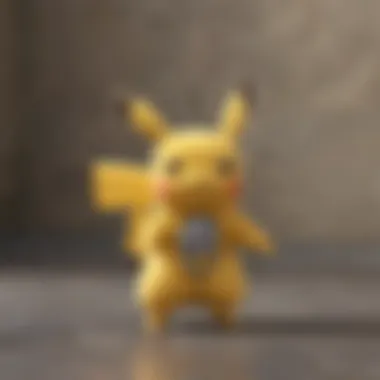
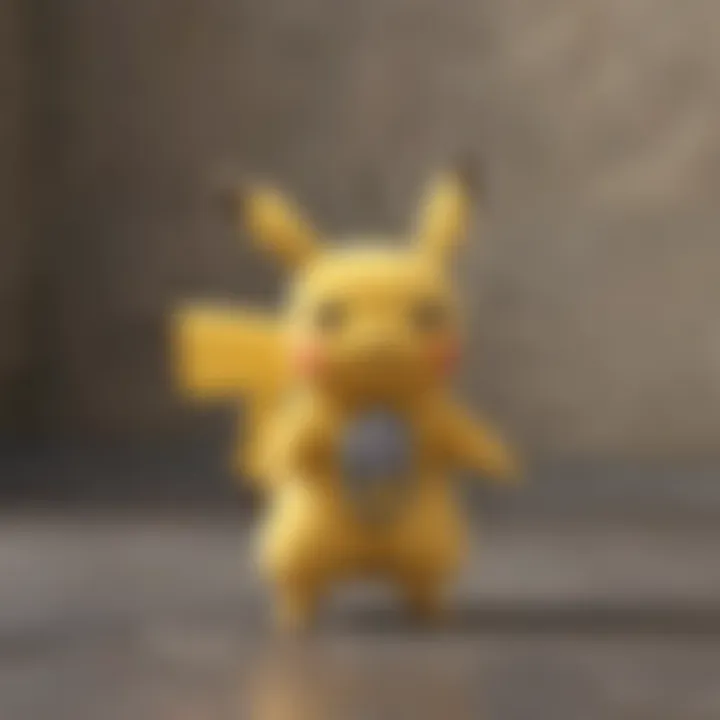
Character Development in Let's Go, Pikachu
In the captivating world of Pokémon Let's Go, Pikachu, character development serves as one of the core pillars that enhances the overall gameplay experience. The connection between trainers and their Pokémon goes far beyond the traditional mechanic of catching and battling. In this installment, the role of character development encourages players to forge emotional ties with their Pokémon, particularly with Pikachu, whom players accompany from the very beginning of the journey. This not only elevates the gameplay but also adds layers of meaningful interactions and memorable moments.
By nurturing this bond, players witness how Pikachu evolves not just in terms of power but also in personality. Players can engage in various activities, such as petting Pikachu or even dressing it in fashionable outfits, which serves to increase affinity. This relationship underscores the importance of connection in the Pokémon universe, experiencing a more profound sense of purpose as one walks through the Kanto Region. The character development aspects in Let's Go, Pikachu provide a refreshing twist that appeals to both new players and seasoned veterans.
Pikachu: More Than Just a Companion
Pikachu in Let's Go, Pikachu is not simply the mascot of the franchise nor just another Pokémon in the player's arsenal; it embodies the emotional core of the gaming experience. Unlike previous iterations where trainers would merely send Pokémon into battle, Pikachu actively interacts with the player during their journey. The way it cheers, sulks, or even steals the spotlight through cute animations fosters a sense of partnership, making players feel invested in its growth.
- Pikachu is vocal about its emotions, reacting to the trainer's actions—whether it's celebrating a victory or expressing discontent during a loss.
- Engaging in various mini-games, such as playing fetch or feeding Pikachu, deepens that bond even further, adding layers of interactivity.
- This partnership bridges the gap between player and character, creating an investment that extends beyond just gameplay mechanics.
Ultimately, Pikachu becomes a cherished friend, marking the path through every town and every triumph.
Trainer Customization Options
Customization has always been a significant factor in RPGs, and Pokémon Let's Go, Pikachu leans into this concept with finesse. The game allows trainers to personalize their avatar in ways that cater to individual tastes, giving players what feels like a blank canvas to express themselves within the vibrant world of Kanto.
From choosing the trainer’s clothing, hairstyles, and accessories, each decision allows players to project their individuality onto their character. Options are not merely cosmetic; they offer a deeper level of engagement with the game. Customization aspects include:
- Clothing choices: Players can flaunt their style, whether they prefer classic looks or trendy outfits reminiscent of their favorite trainers.
- Accessories: Hats, glasses, and bags can be tailored to make a unique statement, enhancing the personalization experience.
- Pikachu’s outfits: Even Pikachu gets in on the customization, with a variety of costumes that add flair and humor to encounters.
This personalization doesn't just enhance the visual experience; it opens avenues for discussions among players about their unique styles and the stories behind their choices. When trainers feel a sense of ownership over their characters, the game becomes more than just a series of battles; it transforms into a more compelling narrative woven through personal aesthetics and emotional connections.
In a way, the development of both trainer and Pikachu signifies a lush relationship that thrives on shared experiences, making every journey feel distinctly unique.
Competitive Elements and Strategies
In the vibrant ecosystem of Pokémon Let's Go, Pikachu, competitive elements and strategies stand as crucial pillars that can make or break a player's journey. As with life, understanding the intricacies of competition within the game can lead to an engaging experience, enhancing player satisfaction and success. It’s not just about catching Pokémon; it's about devising plans that enable trainers to achieve their goals while navigating the rich canvas that is the Kanto region. The importance lies in grasping the complexity of Pokémon types, interactions, and team synergy, all of which contribute significantly to your chances of victory in battles and raids.
Understanding Pokémon Types and Matchups
Every Pokémon in the game is tied to one or two types, such as Water, Fire, Grass or Electric. Each type has strengths and weaknesses against others. For instance, a Water-type Pokémon is effective against Fire types but vulnerable to Electric types. This rock-paper-scissors dynamic is essential to grasp.
Consider the example of a trainer who brings a Charizard, a Fire-Flying type, into battle. If pitted against a Rock-type like Onix, trouble is brewing. The Rock-type can inflict double damage against Charizard, while the Fire moves won't tickle Onix much. Hence, knowledge of these interactions directly impacts strategies in both casual skirmishes and more serious competitive play.
Factors to consider include:
- Type Effectiveness: Knowing which moves to employ against which foes.
- Dual Types: Some Pokémon belong to two types, complicating the effectiveness of moves further.
- Abilities: Some Pokémon have abilities that can alter competitive dynamics, like Levitate making a Pokémon immune to Ground-type moves.
"Understanding matchups is not just for battles; it extends into the wild when you're capturing Pokémon!"
Stay alert for battle scenarios where your type knowledge gives you an upper hand. For example, if you know your opponent has a Psychic type, using a Dark-type Pokémon will give you an advantage. Treat every encounter as a puzzle, where understanding types can tilt the outcome in your favor.
Effective Team Building Approaches
Building a solid team isn’t just about catching a bunch of Pokémon and hoping for the best. It’s about creating a well-oiled machine where each Pokémon complements the other. A balanced team should ideally cover various types and roles, ensuring you’re prepared for anything the game throws at you.
A handful of key approaches stand out in team building:
- Diversity of Types: Incorporating a mix of offensive and defensive types. A team featuring Fire, Water, Grass, and Psychic types can generally cover most bases.
- Roles and Synergy: Including Pokémon for specific roles, such as tanky defenders and swift attackers. For example, using a high-defense Pokémon like Onix can soak up damage while your more fragile, high-attack Pokémon can strike back.
- Item Utilization: Don’t underestimate the power of items. Equipping items like Leftovers can help your Pokémon recover health over time, allowing you to maintain pressure in battles longer.
- Evolving Strategy: Embrace flexibility. Sometimes, switching up your strategy based on previous encounters can yield better results; you never want to go into a battle with the same predictability.
With these building blocks, trainers can create formidable teams that can navigate even the most challenging encounters with finesse and flair. Strive to study not just individual Pokémon but also how they work together to amplify strengths and cover weaknesses.
Understanding these competitive elements and implementing solid strategies enrich your gameplay experience and elevate your chances of conquering every challenge. The world of Pokémon is as layered as an onion; peeling back those layers reveals strategies that can take your journey to another level. This strategic approach is what will ultimately give players the edge in battles and helps forge lasting bonds amongst their Pokémon.
Multiplayer Features and Interactions
In the landscape of gaming today, multiplayer components can be the lifeblood of a title, and Pokémon Let's Go, Pikachu is no exception. One of the standout features that really sets the game apart is how it successfully marries solo and social play. Engaging in multiplayer dynamics not only enriches the experience but also deepens player connections, making it more than just a solitary adventure. The co-op gameplay and trading aspects deliver fresh opportunities for strategy and interaction, creating a buzzing ecosystem where players can thrive together.
Co-op Gameplay Dynamics
The cooperative elements in Let's Go, Pikachu allow two players to join forces, effectively limiting isolation while increasing excitement. When two trainers team up, the game allows them to explore the vast Kanto region side by side. Here’s how this co-op mechanic unfolds:
- Shared Experiences: As players take on the world together, battles, wild encounters, and gym challenges become more exciting. Targeting Pokémon becomes collaborative, where one can distract a creature while the other prepares to catch it.
- Dual Control: Each participant can control their character independently, fostering a sense of distinctiveness. Players can battle, catch Pokémon, and access items simultaneously, making the experience more collaborative.
- The Pikachu Factor: Not just any ordinary partner, Pikachu can interact with both players, sharing affection and engaging in mini-games. When you showcase Pikachu’s charm, it strengthens the bond you share with your teammate and adds an emotional layer to the gameplay.
Despite these advantages, there are caveats to consider:
- Scale and Strategy: While the game allows for two trainers, managing the flow of combat and resources may turn into a balancing act. Players need to coordinate their strategies to avoid miscommunication that may hamper progress.
- Limited Progression: Some players might find that the co-op mode can restrict individual growth. Decisions made in shared gameplay may affect training and leveling Pokémon adequately. This aspect requires mindful strategies where both players align their training goals properly.
Ultimately, co-op gameplay in Let's Go, Pikachu creates an inviting space for players to navigate challenges together, share victories, and cultivate friendships, embodying the essence of Pokémon fandom.
Trading and Communication with Others
Trading Pokémon—a hallmark of the franchise—shines brightly in Let's Go, Pikachu. Beyond catching and battling, player-to-player interaction through trade amplifies both the gaming experience and builds a sense of community.
- In-Person Trading: The game encourages trading through local wireless connectivity. Pokémon enthusiasts appreciate sitting together and using their consoles to swap encounters directly. This face-to-face interaction isn’t just a nostalgic nod; it fosters real connections among fans.
- Encourage Collection: By trading, players can complete their Pokédex while avoiding the stress of repetitive captures. This feature nudges players toward collaboration and negotiation, introducing a fun element of bartering.
- Communication Advantages: Engaging with friends or family for trades pushes players to discuss their strategies. Chatting about moves, evolutions, and Pokémon abilities opens dialogues that enhance the overall experience.
However, there are some things to keep in mind:
- The Trade Evolution: Certain Pokémon evolve only when traded, which may frustrate some players if they’re not in the right circle for such exchanges. This element might necessitate forming connections outside the game—a thoughtful reminder that building community is key.
- Varying Expectations: Players who have different objectives or varying levels of experience can find trading problematic. It's crucial that both parties are aligned regarding what they wish to gain from the exchange to enhance satisfaction.
In essence, the trading feature within Let's Go, Pikachu embodies the series' core philosophy of connection and collaboration, enhancing the gaming experience while fostering a rich community among fans.
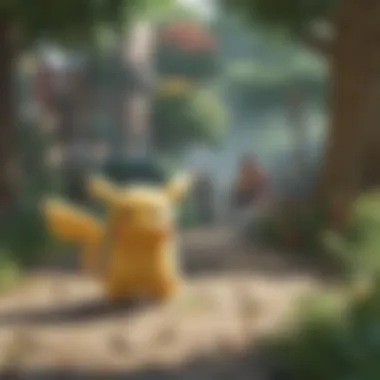
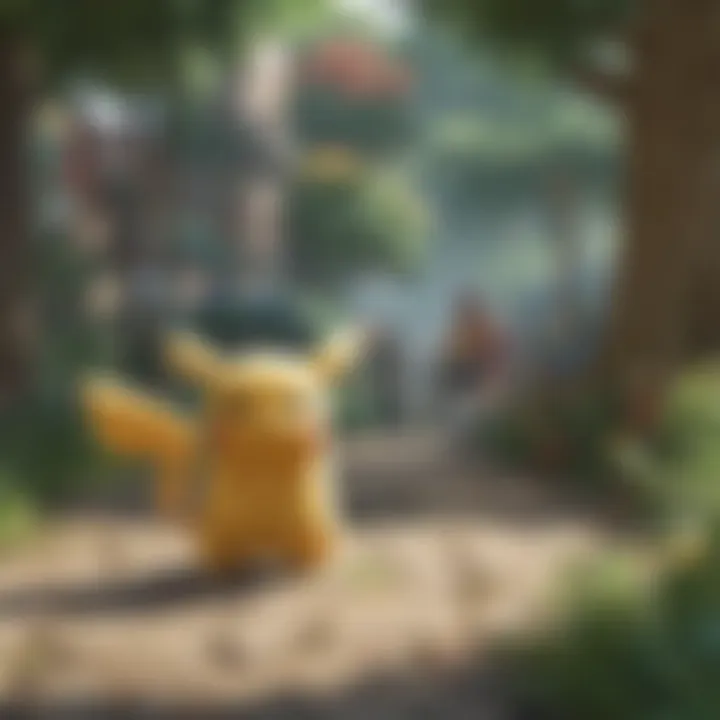
"Pokémon is not just about individual success; it champions the spirit of working together, sharing, and building lasting friendships."
The innovative multiplayer features and interactions in Pokémon Let's Go, Pikachu provide players with ways to deepen their journey, engage with friends or family, and contribute to a vibrant ongoing narrative of connection and exploration.
Nostalgia Factor in Gameplay
The nostalgia factor in gameplay plays a significant role in how Pokémon Let's Go, Pikachu resonates with both newcomers and seasoned players. It's not just about catching Pokémon or battling trainers; it’s about experiencing a revival of cherished moments from the earlier Pokémon games while introducing fresh elements. These sentimental connections deepen the engagement with the game, making each encounter and battle feel like a walk down memory lane.
Connections to Classic Pokémon Titles
One of the most striking aspects of Let's Go, Pikachu is its profound link to classic Pokémon titles, especially Pokémon Yellow. Players see familiar locations like Pallet Town and Viridian City, which stimulate nostalgia instantly. The whimsical music, the aesthetics, and even the character design hark back to simpler times when players first embarked on their Pokémon adventures.
- Visual Homage: The graphics pay homage to the original sprite designs, making everything feel both old-school and new at the same time. This blend of nostalgia and innovation invites players to experience the Kanto region with a fresh perspective.
- Familiar Mechanics: The return to capturing Pokémon in the wild using a catching mechanic that resembles Pokémon Go is another notable tie-in. This familiar system lets players relive the excitement they once felt while mastering the original games.
- Legacy Elements: Familiar elements such as Gym Leaders and original Pokémon line-ups pull at the heartstrings of long-term fans.
Each of these connections serves not just as a reminder of the past but as a bridge that allows players to create new memories while revisiting their most loved parts of Pokémon history.
Fan Reactions and Community Discussions
The community around Let's Go, Pikachu has been buzzing, with fan reactions and discussions reflecting a mix of joy and critical observation. On platforms like Reddit and Facebook, players share their experiences, dissecting both the nostalgic aspects and the new features introduced in the game.
- Positive Reception: Many fans have expressed a happiness that stems from the nostalgia, praising the game for rekindling their childhood passions while still providing modern mechanics. Users often discuss how revisiting iconic places and battles gives them a sense of warmth and familiarity.
- Critiques and Evolved Expectations: That said, there are also conversations surrounding the perceived lack of difficulty compared to earlier titles. Some players feel that the simplicity of the game caters too much to casual gamers, diluting the challenge that was once a hallmark of the series.
- Engagement: These discussions not only showcase fan passion but also depict a community actively involved in analyzing how the nostalgia factor influences player engagement and gameplay satisfaction.
**"Nostalgia isn’t just about what you love. It’s about connecting the old with the new, creating a bridge for new memories."
Reception and Critique
The reception and critique of Pokémon Let's Go, Pikachu serves a critical role in understanding this title’s place within the broader Pokémon franchise. By analyzing the feedback from critics and players alike, one can appreciate both the strengths and weaknesses of this game. This section aims to sift through various perspectives, presenting a well-rounded view of how this game has been perceived and what implications this has for future Pokémon titles.
Critical Reviews Overview
In the world of gaming, reviews can make or break a title. For Pokémon Let's Go, Pikachu, critics offered a mixed bag of feedback. On one hand, many appreciated the game’s nostalgic elements, which harked back to the simpler mechanics of the original Pokémon games. Reviewers often pointed out that the seamless integration of the traditional Pokémon catching mechanics with modern technology was brilliant. They applauded the user-friendly approach, making it accessible for newcomers while providing enough depth for seasoned players to dig into.
However, not all reviews were roses. Some critics argued that the game felt somewhat simplified, leaving hardcore fans longing for more complexity in battle mechanics. A number of reviewers noted that the catching system was more akin to Pokémon Go, primarily emphasising catching over strategic battles, which might not sit well with purist players. Reviews highlighted this duality:
"The simplistic nature of catching Pokémon could be seen as a step back for series veterans, yet it might welcome newer players into the fold."
Overall, reviews have been constructive in shedding light on how the game strikes a balance between being a tribute to the past while simultaneously aiming to cater to the present-day audience.
Player Feedback and Expectations
The player feedback surrounding Pokémon Let's Go, Pikachu has been incredibly diverse, reflecting the wide-ranging community that Pokémon attracts. A significant portion of players expressed enthusiasm for the nostalgia factor, sharing their fond memories of the Kanto region and the original gameplay. Many appreciated how the game captured the essence of that golden era while utilizing the Switch's capabilities to enhance graphics and sound.
On the flip side, there's a contingent of players who express dissatisfaction—fearing that this title might mark a shift toward prioritizing casual gamers over traditional fans. Players voiced concerns about the perceived lack of challenge, especially when it came to gym battles and competitive play. The blend of co-op play was met with mixed feelings. Some found it to be an entertaining addition, while others felt it diluted the competitive aspect of Pokémon battles.
- Expectations for Future Titles:
- Depth of gameplay mechanics
- Innovation in multiplayer aspects
- Preserving challenge without overwhelming newcomers
Future of the Pokémon Series
The Pokémon series has captivated millions across generations, evolving alongside technology and player expectations. Discussing the future of the Pokémon series within this article illuminates key components that could shape the landscape of these beloved games. As the franchise continues to innovate, recognizing emerging trends and potential challenges is crucial for understanding how it can maintain its vast appeal while attracting new fans. Through this exploration, we can better appreciate the blend of nostalgia and contemporary advancements that mark its journey ahead.
Predictions Based on Emerging Trends
As gamers become increasingly interconnected, one trend likely to shape the Pokémon series is the enhanced importance of online gameplay and social features. Players now expect seamless integration of multiplayer aspects, fostering a sense of community. The ability to trade and battle in real time with friends, or complete challenges together, expands the possibilities of teamwork and interaction.
- Greater Online Integration: With advancements in technology, the future will likely involve more sophisticated online platforms, allowing for expansive communities and encouraging collaborative play.
- User-Generated Content: The trend of allowing players to create and share their own game content is gaining traction. This could enable trainers to design unique challenges or arenas, infusing creativity into the gameplay.
- Augmented Reality Enhancements: Building from the success of Pokémon Go, expect innovations in AR to play a bigger role, immersing players deeper into the Pokémon world while blurring the lines between reality and gaming.
"The integration of online co-op and user-generated content can redefine how players experience Pokémon together, inviting them into a world of creativity and competition."
Potential Innovations and Challenges Ahead
Looking ahead, the Pokémon series faces both promising innovations and notable challenges. The developers' commitment to exploration could lead to transformative gameplay experiences, but balancing new ideas with the franchise's rich history is key.
- Innovations in Gameplay Mechanics: Streamlined mechanics that enhance user experience while still allowing for strategic depth may come into play. For instance, simplifying battle controls could empower newer players, while retaining multilayered strategies for veterans.
- Cross-Platform Play: Expanding into cross-platform ecosystems could allow players on different devices to connect, broadening accessibility and maintaining player engagement.
However, challenges remain:
- Maintaining Franchise Identity: As new elements are integrated, ensuring that the core essence of Pokémon is preserved is crucial. The right balance is required to keep both new and veteran players satisfied.
- Technological Barriers: Emerging technologies often come with hurdles. Not all players have access to high-speed internet or the latest devices, and developers need to create inclusive solutions that bring everyone along on the journey.
- Community Expectations: Fan reactions to changes can be unpredictable. Balancing innovation against established expectations will be a tightrope walk for the franchise.
While the future holds exciting possibilities, staying attuned to these expectations will be essential for the continued success of the Pokémon series.
The End and Final Thoughts
As our journey through Pokémon Let's Go, Pikachu comes to a close, it's fitting to reflect on what sets this title apart in the broader tapestry of Pokémon games. The conclusion serves not just as a summary, but as a lens through which we can appreciate the rich mechanics, strategic elements, and nostalgic ties that resonate throughout the game.
Key Elements of the Experience
Ultimately, the most critical aspect discussed in this article is how Pokémon Let's Go, Pikachu intertwines simplicity with depth. The integration of motion controls, reimagined catch mechanics, and cooperative gameplay transforms what could have been a straightforward adventure into something truly engaging.
Benefits and Considerations:
- Engagement: The gameplay keeps players invested. Whether you’re a newcomer or a seasoned trainer, the blend of old and new mechanics ensures that players feel constantly challenged yet not overwhelmed.
- Nostalgia: The reminders of past Pokémon experiences add a layer of emotional connection, making each encounter significant. Players can find themselves reminiscing about classic battles while enjoying the revamped graphics and smoother gameplay.
- Community: The multiplayer elements encourage cooperation and communication among players. The ability to trade, fight, and simply explore together creates a sense of belonging among Pokémon fans.
"The combination of nostalgia and modern design principles allows for a unique experience, inviting players to not just play, but to relive their childhood."
As we synthesize the insights presented, it's clear that Pokémon Let's Go, Pikachu holds a unique place within the franchise. It manages to honor the legacy of its predecessors while also appealing to new players with its innovative mechanics and accessibility. The game empowers players with choices—from team selection to battle strategies—encouraging a discerning eye for details associated with Pokémon types and their effective applications in battles.
In summation, this title exemplifies the ability of game designers to adapt and innovate while still paying homage to the roots of Pokémon. Its significance goes beyond entertainment; it fosters a space where both nostalgia and novelty can coexist, ultimately enriching the gaming experience for everyone. Thus, as players venture into the Kanto region, they're not only embarking on a mission to catch 'em all but also embarking on a richly layered journey that celebrates the essence of Pokémon.
Understanding these elements ultimately enhances our appreciation, making Pokémon Let's Go, Pikachu more than just a game—it's a heartfelt tribute to a beloved franchise.







